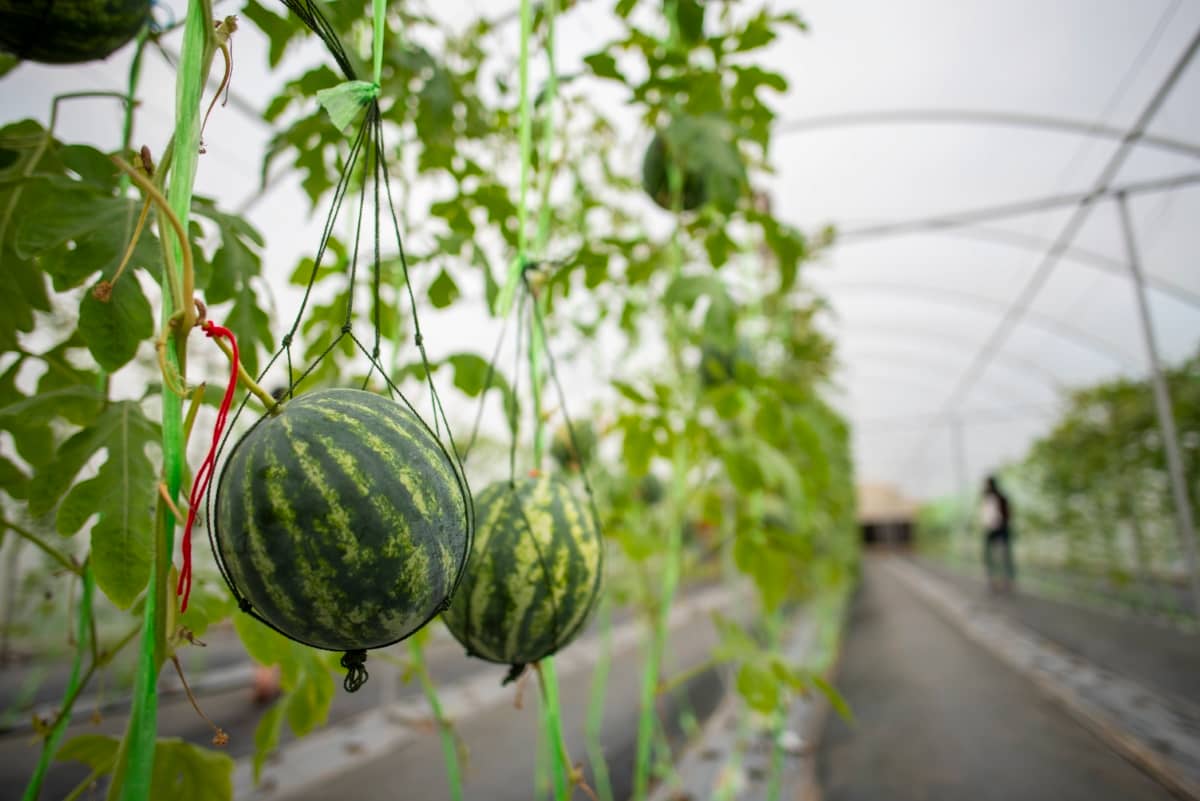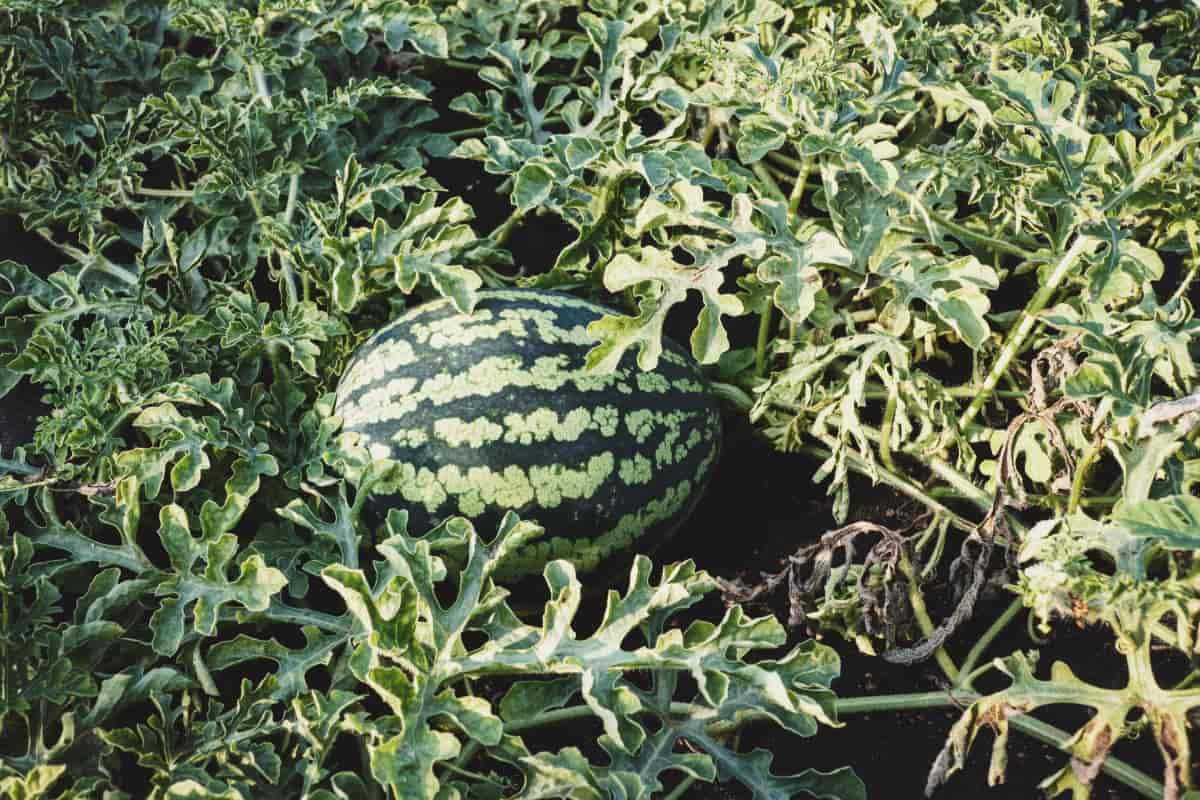Nothing is better than enjoying that crisp, sweet, juicy melon when summer arrives. There are, however, times when watermelon plants experience problems growing. It is very essential to fix the problem as soon as possible if your watermelon plant is dying. Look at the common causes of watermelons dying and how to prevent them from dying.

9 Causes of Dying Watermelon Plant
Why is My Watermelon Plant Dying in Summer Heat, and How Can I Save It?
Extremes in temperatures can affect watermelon plant stages and development. The best daytime air temperature for growing watermelons is from 21°C to 32°C. The plants often drop flowers and do not set fruit when daytime temperatures are 32°C or higher for several days. The time at which your vines will be most sensitive is when they are still young, as they are still vining and spreading out.
Until the leaves create a canopy to shelter the vine beneath, you may want to use a shade cloth to cool the watermelon plants down if the heat spikes. To keep the soil cool, use straw mulch under your plants if temperatures are higher than in your area. Mulch with a light color will stay cooler than mulch with a darker color.
Preventing Watermelon Plant Death From Fungal Infections: Effective Remedies and Prevention Tips
- Powdery mildew: Powdery mildew can be treated with fungicides. You should give all your watermelon plants enough space to spread without crowding. Watermelon diseases can be prevented this way.
- Downy mildew: Affects only the leaves of the plant. When there is high humidity, this late-season infection spreads to the underside of the leaves. It is best to apply a fungicide to the plant before it becomes infected with downy mildew.
- Alternaria leaf spot: This is another watermelon disease that affects only the leaves. You can prevent Alternaria leaf spots by watering the soil or drip irrigation.
- Fusarium wilt: Crop rotation is another excellent method of preventing fungus growth in the soil. It reduces the spores’ chances of surviving in the soil. Lime can also help create a neutral pH level in your garden, preventing Fusarium wilt from spreading.
Identifying Nutrient Deficiencies in Watermelon Plants and Remedies to Revive Them
These symptoms can indicate nutrient deficiencies, including stunted growth, yellowing leaves, and poor fruit production. The aforementioned symptoms can be caused by nitrogen, phosphorus, and potassium deficiencies, three important nutrients for watermelon plants.
The deficient nutrients can be supplemented with fertilizers, and a fertilizer balanced with all three essential nutrients will ensure that the plants receive all the nutrients they require. Pay attention to soil pH and watering to ensure optimum nutrition for watermelon plants. pH levels between 6.0 and 7.0 are considered ideal.
How to Protect Watermelon Plants from Pests and Diseases to Prevent Decline and Death
Regularly inspect your watermelon plants for any signs of pests or diseases. Look for any unusual webbing, yellowing leaves, or other signs of distress.
- Soap solutions are an all-purpose way to eliminate numerous garden pests, including aphids on watermelon plants.
- An all-purpose Garlic spray combines the heat and bitterness of hot peppers, onions, and garlic to create a potent repellent for leaf-eating pests.
- Diseased plants can spread their disease to healthy plants. The garden should be kept free of dead or diseased plants to prevent disease spread.
Overwatering Issues in Watermelon Plants: Signs, Symptoms, and Steps to Rescue a Dying Tree
Make some adjustments you can make to improve the landscape of your Watermelon plants if you are overwatering your plants. The leaves of overwatered plants become soft and limp, and their growth is stunted, resulting in yellowing leaves. This symptom is often accompanied by leaves falling off. Your plants are overwatered if they have yellowing leaves and old leaves. Also, new leaves fall at an accelerated rate.
In case you missed it: 9 Causes of Dying Cashew Trees and How to Fix Them?

Overwatered plants can still be saved and thrive in your landscape once identified. Make sure your soil is regularly checked. Make sure the soil is moist by pressing your finger about an inch. The soil may feel moist if you observe some of the signs above, and you need to reduce your watering. To avoid overwatering, ensure that the soil dries out between waterings and can drain properly.
Underwatering Issues in Watermelon Plants: Signs, Symptoms, and Steps to Rescue a Dying Tree
Watermelons require loose, organically rich, and evenly moist soil in a warm, sunny garden. If the soil and the plant’s roots are allowed to dry out, the vines and leaves will wilt, then shrivel up and die. Add mulch around the plants to conserve water and slow evaporation from the soil. If adequate water is not available to the plant, the fruit will not be able to grow to its full potential and may become stunted or fall off the vine.
Watermelon plants require 1 to 2 inches of water daily when growing, flowering, and bearing fruit. In addition, you have to keep the soil wet but not soggy. In the morning, water the vines at their base, careful not to wet the foliage or water from above. Once the fruit is grown, watering can be reduced.
Watermelon Plant Winter Damage/Dying: Protecting Trees from Frost and Cold Temperatures
Frost is fatal to watermelons. When the fruit is exposed to freezing temperatures, it will wither and die. Despite a short frost period, a watermelon will become mushy and unusable. The trailing, flowering plants thrive in the heat, so exposure to snow, frost, or other wintery elements will destroy them. Young watermelon plants can be damaged, their growth slowed, and their yields reduced by air temperatures below 21°C.
Temperatures below 0°C kill watermelons. A temperature range of 21°C to 32°C is needed for the fruit to grow. Frost-free days are necessary for watermelons to develop fully between 65 and 90 days after planting. You can mulch your watermelon plants using a clear plastic to keep the soil warm, and floating row covers should be used to protect them from the wind. Watermelon can also be grown in cold frames in northern climates.
Improper Pruning May Cause Watermelon Plant Death: Pruning Methods for Healthy Growth
Pruning is vital maintenance of the care of any watermelon plant and should be done with care. Improper pruning can cause the death of a watermelon plant. Following the correct pruning methods is important to keep a watermelon plant healthy. Not pruning properly or at all can result in a messy situation of too many vines and not enough fruits.
- Before you start, make sure to examine your watermelon plants. They must be well-established before you prune them, or the process will not work. Always find the primary stem on each plant.
- Using good gardening shears, remove dead, diseased, yellowing, or infested leaves or shoots at the joint connecting to the main stem. Also, remove secondary vines that are not bearing blooms.
- Watermelons are susceptible to parasites and diseases, and pruning while damp will encourage their growth and spread. Don’t prune the vines while wet.
- Also, ensure not to prune the top lateral branch extending from each primary stem. That one is also important to keep. Once you find those, you can start pruning.
Reviving a Stressed Watermelon Plant: Rehabilitation Methods for Overall Recovery
- If insects cause stress, it is important to properly identify the insects and use the appropriate methods to remove them. Insecticides can be used to remove pests, but it is important to use organic methods and the right type of insecticide.
- If a disease causes stress, it is important to properly identify and use the appropriate treatment methods. Fungicides and insecticides should be used to treat fungal and insect diseases, respectively.
- To provide the stressed watermelon plant with the necessary nutrients to help it recover. Fertilizers and compost can give the plant the nutrients it needs to survive. Additionally, mulch can help retain moisture and provide additional nutrients to the plant.
In case you missed it: 9 Causes of Dying Custard Apple Tree and How to Fix It?

Conclusion
In conclusion, improper watering, inadequate soil drainage, pest infestations, and extreme temperatures are all potential causes of death for a watermelon plant. Identifying and fixing these issues can help ensure that your watermelon plants live long and healthy life.
- Ultimate Guide to Ossabaw Island Hog: Breeding, Raising, Diet, and Care
- Ultimate Guide to Juliana Pig: Raising Facts, Size, Diet, Care, and Lifespan
- Raising Lleyn Sheep: Disadvantages, Price, Uses, Characteristics, and Care
- Ultimate Guide to Meishan Pig: Breed Facts, Breeding, Raising, and Care
- Ultimate Guide to Teacup Pigs: Raising, Diet, Lifespan, Cost, and Care
- Guide to Raising Poll Dorset Sheep: Facts, Profile, Characteristics, Uses, and Care
- Ultimate Guide to Bighorn Sheep: Characteristics, Diet, Lifespan, Breeding, and Lifecycle
- Ultimate Guide to Raising Katahdin Sheep: Farming Facts, Breed Profile, Uses, and Care
- Ultimate Guide to Raising Oreo Cows: Belted Galloways Farming Facts, Profile, Uses, and Care